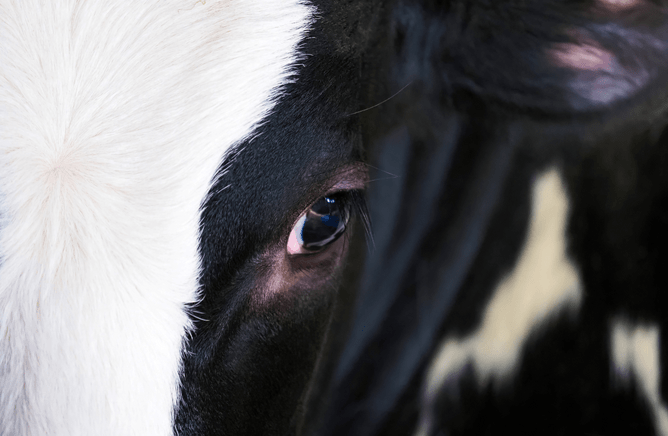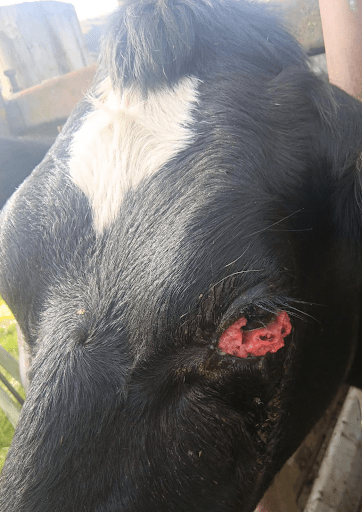When you’re working at the back-end of a cow every day, it’s easy to miss what’s going on at the front-end. However, it should be good stockmanship and practice to look, periodically, for signs of cancer eye.
As the name suggests, cancer eye (otherwise known as squamous cell carcinoma) is a cancer of the eye, which can affect the eyelids, eyeball or 'third eyelid' (the eyelid that slides across the eye) and it is as bad as it sounds!
Why do cows get it?
Environmental, viral and genetic factors are said to play a role in this tumour's development. It is most commonly seen in unpigmented tissue (commonly white-faced animals, but it is not just localised to these) and is related to ultraviolet radiation - not too dissimilar to skin cancer in humans.
What does it look like?
The initial stages of cancer eye are usually slow. It may just present as a tiny, knobbly growth on the third eyelid, which can be hard to detect. Cows may have a slight discharge from the eye, due to irritation.
Over time, the tumour will (usually) continue to grow in size, eventually becoming a large mass that becomes necrotic and foul smelling.
If the tumour spreads, it can also cause the lymph nodes around the cow's head to swell up.
What should you do about it?
Quite often, people initially confuse cancer eye with pink eye and treat it with a tube of eye ointment, which will offer no improvement. After this, a vet visit is highly recommended.
Like most types of cancer, early detection leads to better outcomes. Early surgical removal of the lesion provides the best outcome and the prognosis is a lot better when the lesion is small in size, as we are able to get good margins. A cell left behind is enough to seed another tumour!
Sometimes, just the third eyelid can be removed, while other times, the whole eye might need to come out. In some cases, nothing can be done and calling pet food is the only option left.
If the tumour has invaded local lymph nodes, or has migrated into tissues around the eye, then removal is not an option.
Be aware that transportation to the works is not permitted when she has reached this stage. Only a very small cancer eye is allowed, if certified by a vet.
It pays to check!
If you see a tumour in your herd, get it checked! Even if you just flick your KeyVet a photo, we can usually give you an indication as to whether it needs to be examined more closely, or removed, leading to a much better outcome for all!
If in doubt, get it checked out!
This article was originally by Dr Sunita McGrath and published by VetSouth. It has been updated from the original by Dr Beth Scott to reflect regional variations. As a trusted partner of Vet Clinic Morrinsville, we're proud to share their expertise with our community.



